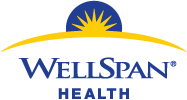Taking action to fight high blood pressure

Without intervention, my blood pressure could have put me at risk for heart disease and other illnesses.
“Your blood pressure is too high. I’m concerned that you could have hypertension. You need to have this looked at.” These were the words that I heard from the doctor at my medical school’s version of an urgent care center. In my mind, I already had all the excuses lined up – I had been taking cold medication (everyone knows that can elevate your blood pressure), I have no family history of early onset hypertension, I was stressed because I’m in medical school and sick with probable bronchitis – of course it was high! – but in the end I took his advice and set up an appointment with my regular provider, and the diagnosis was confirmed.
Like many patients with high blood pressure, I had no symptoms, and, as a healthy, regularly exercising medical student, I had no good reason to see a provider regularly.
“Without the intervention of this provider, my blood pressure could have gone on untreated for years, eventually putting me at risk for heart disease, stroke and other end organ damage.”
Patients like my “25-year-old” self are one of the targets of WellSpan’s Communicating High Blood Pressure Initiative. This simple initiative, which involves specialty practices communicating back to the primary care provider’s (PCP) office either by electronic communication (for blood pressures between 160 and 180) or by a telephone call if the blood pressure is markedly elevated (greater than 180), promises to make a difference in the lives of patients in our community.
Instead of patients potentially waiting months or years for the elevated blood pressure to be discovered, WellSpan specialty office teams, if an elevated blood pressure is noted, will be proactive about making sure that patient’s PCP is aware of the blood pressure elevation and, hopefully, by early intervention, we will help save lives.
This communication is also a foundational element of WellSpan’s path, not only towards its primary care offices becoming Patient Centered Medical Homes, but also towards our eventual goal of creating a Patient Centered Medical Neighborhood – a close collaboration of our primary care and specialty offices, Working as One, to provide the best care for our patients. One of the first steps of establishing the “Neighborhood” involves exceptional communication between primary care and specialty practices.
WellSpan is not addressing high blood pressure in isolation. Lowering blood pressure throughout the country is the goal of a national “Measure Up, Pressure Down” campaign. By simply addressing the elevated blood pressures, we join many other national and international organizations as well as medical societies in trying to decrease the burden of high blood pressure across the nation.

Marijka Grey, M.D.
As part of this initiative, staff members are being retrained as to how to take a proper blood pressure. Taking a blood pressure is such a basic part of every visit, we often forget that it involves many steps including making sure that the patient is seated, rested (not just rushed in from the waiting room), not talking at the time the measurement is taken, the blood pressure cuff is at the level of the patient’s heart, and, if the blood pressure is elevated, to repeat it to ensure accuracy. Primary care offices are also being challenged to see the patient with the elevated blood pressure within a week, to make sure that the blood pressure elevation is addressed.
By working together, we hope to decrease the burden of hypertensive disease in our community and help save lives in the process.
By Marijka Grey, M.D., Associate Medical Director-Quality and Innovation, WellSpan Health



